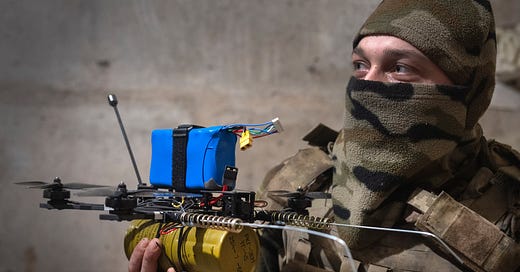DIU Launches Project G.I. with $20M Prize Pool to Accelerate UAS Development, Inspired by Ukraine’s Rapid Battlefield Innovation
The Defense Innovation Unit (DIU) launched Project GI, a new initiative aimed at significantly reducing the timeline between frontline feedback and field-ready drone upgrades. This initiative acknowledges the rapid battlefield innovation occurring in Ukraine, where soldiers and engineers are collaboratively developing tools in close proximity to Russian artillery.
Unlike traditional acquisition programs with strict deadlines and lengthy procurement cycles, Project GI is designed to operate continuously. The objective is to establish a live feedback loop- design, test, deploy, repeat - where companies remain in constant contact with drone operators rather than contract officers. Project G.I. seeks high TRL solutions for small and medium UAS, focusing on adaptable, non-exquisite platforms for military use. Submissions to the program will be accepted through the end of the year, and DIU officials have indicated they are intentionally removing constraints associated with older systems.
"We aim to start addressing the problem within 24 hours," stated Trent Emeneker, who leads the Blue UAS program within DIU. This approach is radically different from the current norm, where even expedited efforts can take up to five years to progress from requirement writing to a working prototype.
Ukraine's success has underscored the strategic advantage of implementing rapid updates directly to the front lines. Shield AI, one of the American firms operating in Ukraine, has adopted this model. Its engineers work closely with Ukrainian units, gathering insights and promptly relaying them to their teams in the United States. For instance, during a GPS-jamming attack by Russian forces last August, Shield AI delivered a software update within 24 hours. The updated drones were redeployed within a day, effectively neutralizing Russian missile systems.
This level of responsiveness is what Project GI aims to achieve, not only for software but also for hardware.
However, speed is not the sole challenge. The Pentagon continues to grapple with significant supply chain risks, particularly its reliance on Chinese-manufactured parts. Critical components such as magnets, lenses, and actuators are predominantly sourced from China. Even with an aggressive reshoring effort, it could take at least a year to reach substantial production levels.
In the interim, the DIU program seeks to reduce drone design cycles from years to months, at least for systems already in development. If successful, this could indicate a broader transformation in how the Pentagon collaborates with dual-use startups and deploys technology at the forefront.
DIU’s latest initiative reflects how Ukraine’s drone war has instigated a significant shift across the defense sector. Military technology is increasingly originating not from traditional primes, but from startups close to the frontline.
The drone war in Ukraine has evolved beyond explosive payloads and aerial tactics: it is now a complex battle involving software, sensors, and real-time adaptation. Ukrainian forces have executed intricate, long-range strikes deep into Russian territory, such as the June 1 attack that reportedly destroyed over 40 Russian aircraft across bases situated thousands of kilometers from the front.
This situation is not merely a military narrative, it is also a startup story. A handful of innovative companies, such as KrattWorks, Auterion, and Huless, are driving Ukraine’s advancing drone capabilities by pushing the boundaries of autonomy, navigation, and survivability. These startups are not only developing superior drones, but also are inventing new strategies for modern warfare.
KrattWorks, Auterion, and Huless share more than technical proficiency: they operate close to the battlefield, iterate rapidly, and collaborate closely with end-users. As a result, Ukraine’s defense ecosystem, at least when it comes to drones, is not merely matching global defense contractors, it is surpassing them. While Western firms may offer high-spec systems, Ukrainian and allied startups are delivering what soldiers genuinely need: drones that are affordable, intelligent, adaptable, and ready for immediate deployment. This reflects the new paradigm of insurgent defense innovation. Not top-down procurement cycles but live code updates, battlefield telemetry, and hardware adapting swiftly to evolving threats.
Related:
How Ukraine’s Operation “Spider’s Web” Redefines Asymmetric Warfare
How A Grisly Injury Threw A $5 Billion Drone Startup Off Course



